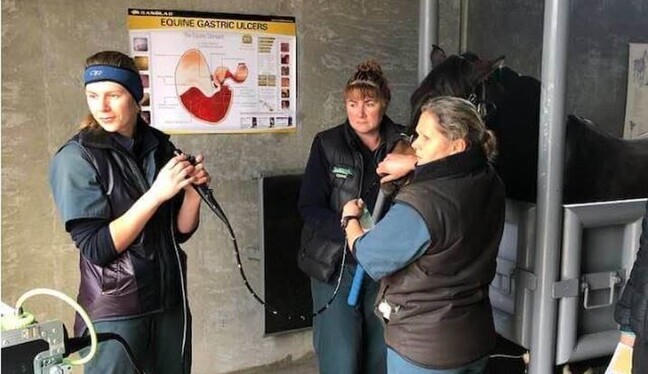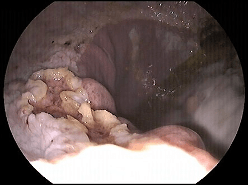Want to know more about gastric ulcers in horses and their negative effects? Many different ailments and conditions of horses are blamed on or linked to stomach ulcers. Here is a run down on common questions asked in relation to gastric ulcers.
What are ulcers?
Gastric ulcers range from mild areas of inflammation in the horses stomach lining through to erosion of the stomach lining.
How are stomach ulcers caused?
The stomach is full of acid for digestion. For a number of reasons there is a breakdown in the normal protective covering in the stomach allowing the acid to burn into the stomach lining. The below image shows grade 4 gastric ulcers.
Stomach anatomy of a horses
The equine stomach has a top and bottom half which are quite different. The top half is only moderately protected from the effects of acid and a lower half where acid is produced has more protection. Ulcers are more common in the top half but can occur in the bottom half as well.
Why are ulcers common in horses?
The horse has evolved to graze most of the day and consequently produce acid most of the time. Grazing also produces saliva in large quantities and this contains bicarbonate which will tend to neutralise the effects of the acid. This establishes a balance of acid and alkaline and with a protective coating of mucus stops the acid from damaging the stomach lining.
21st century horses don't often feed/graze for most of the day and can get their nutritional requirements from 2 hard feeds per day. This leaves the stomach empty for a large portion of time; exposed to acid and unprotected from the beneficial effects of saliva produced by grazing.
The horse has a small stomach for its size. Exercise compresses the stomach forcing acid upward. Ulcers appear to be the result of acid splashing from the bottom of the stomach onto the upper less protected area of the stomach.
How can ulcers be diagnosed?
The only definitive means of diagnosing ulcers is to look into the stomach with a camera on the end of an endoscope. To reach the stomach of large horses this scope needs to be 3 metres long. Horses must be held off food to have this procedure performed so the stomach lining is visible.
How can ulcers be treated?
The most effective means of treatment is with the use of drugs to reduce the ph of acid and allow ulcers to heal. Omeprazole is the drug of choice.
What else can I do to help or prevent ulcers?
There are a number of management tips that can help with ulcer prevention. Giving a small roughage feed 30 minutes before exercise will help mop up free acid that may splash during exercise. Pasture turnout facilitates continuous saliva production. Similarly ready access to hay for long periods is helpful. Limiting the amount of grain as these can increase deleterious acid producing compounds on digestion.
21st century ways of keeping and working horses can predispose to ulcer formation - things like extended periods of transportation, intense competition, food deprivation, social isolation from other horses are part of the way we manage horses. For this reason we need to live with the possibility of ulcer formation as a consequence of how we use our horses.
Having our own 3m long endoscope is on the clinics wish list and hopefully wont be too far away. In the meantime we have had the use of borrowed scopes and are hoping to make stomach scoping a regular service. If you want to talk about the possibility of stomach ulcers in your horse please call the clinic.
- Brendon Bell


